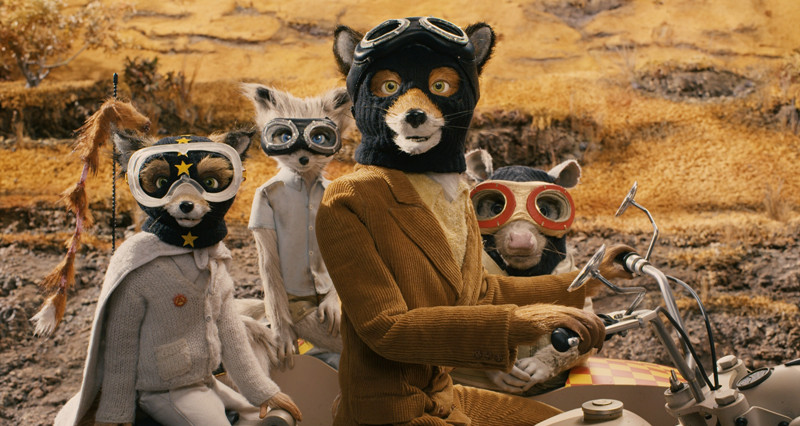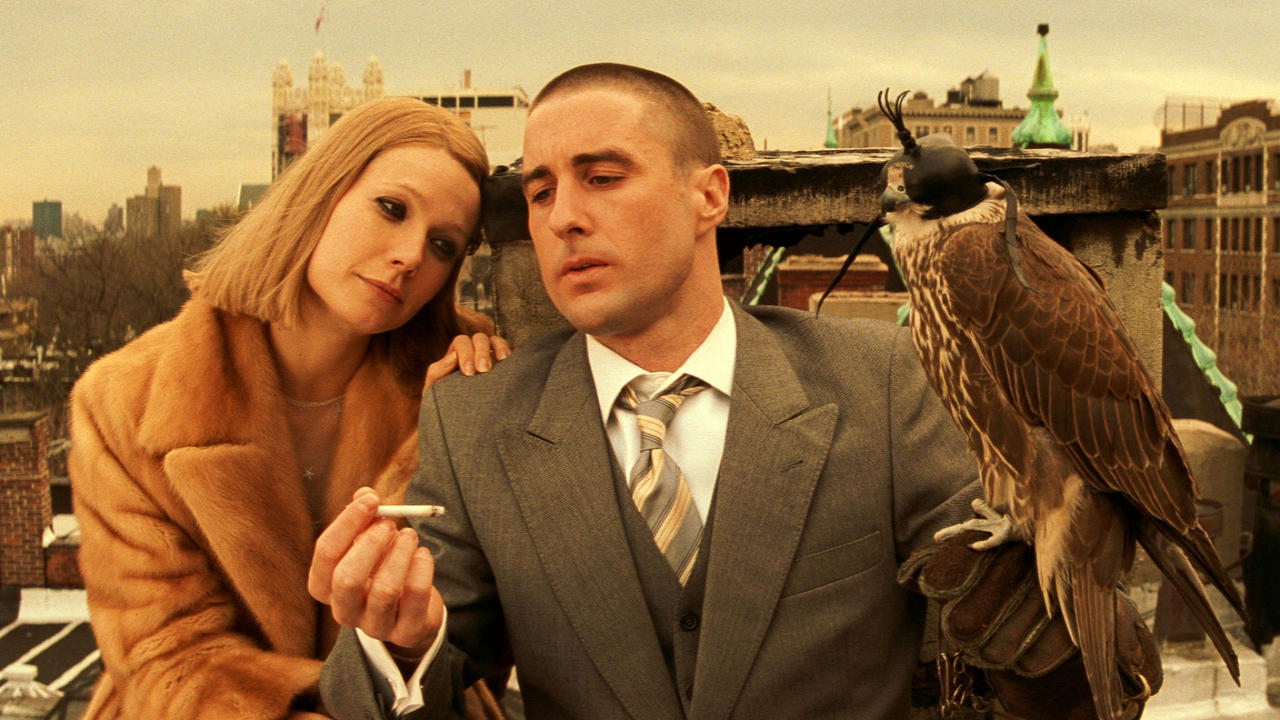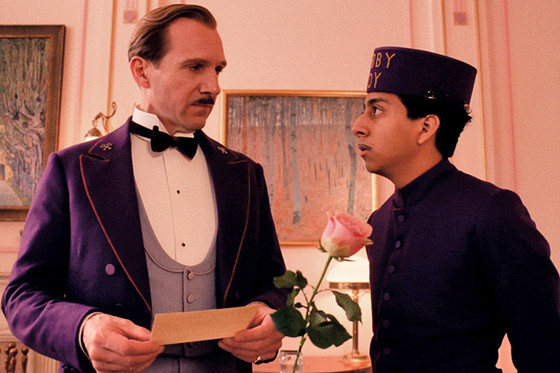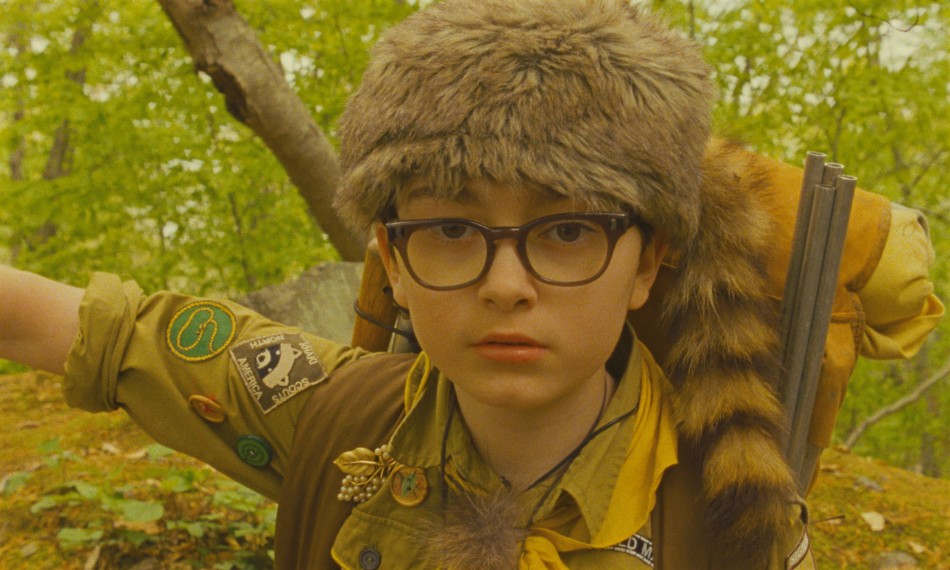4. Fantastic Mr. Fox

After more than a decade of mostly keeping his inner child hidden inside him, Wes Anderson decided to ditch live action and use stop-motion animation to craft a lovely gem that marked a milestone in his career. Films that came after “Fantastic Mr. Fox” would have markedly different characteristics from the ones that came before it. His direction and writing would become much more controlled and exacting, precisely hitting the right notes with his masterfully eclectic compositions. Somewhere between that authority and the airiness of his earlier films is “Fantastic Mr. Fox.”
Chronicling the events in the life of a wild, intelligent, charming and reckless fox, expertly voiced by George Clooney, and the trouble he gets his family and the animals in his community into when three farmers try to get back at him for stealing their produce, the film is based on a classic Roald Dahl novel and combines Dahl’s immersive fantasy with Anderson’s sharply observant style seamlessly.
Mounted with palpable affection for children’s tales, the film packs an emotional wallop amidst its fast paced, extensive explosions of wit and edginess. The cast is lined with Anderson perennials and has titans like Clooney and Meryl Streep playing the leads with masterful pizzazz, fully exploiting the range of their brutally outstanding voices. Clooney especially lends Mr. Fox the charm that allows the audience to see him as the perfect companion on the wild journey. He gives stability, but without ever taking away the joyous energy of the film. But the standout, by far, is Jason Schwartzman as Mr. & Mrs. Fox’s son Ash, who is frequently described as being “a little different”. The sheer honesty his voice radiates with is one of the biggest reasons to see the film.
Anderson explores themes of greed, survival, pettiness and family life with feisty density here. His mastery at dialogue is on full display here, and his well-rounded characters make the film a cheerful romp from beginning to end.
3. The Royal Tenenbaums

While “Rushmore” gave Anderson the breakthrough he deserved, it wouldn’t be until “The Royal Tenenbaums” that he would truly and brilliantly operate within the confines of his self-developed style while transporting us to an entirely different world. “The Royal Tenenbaums” not only has one of the best screenplays of all time, but possibly showcases the most flawlessly calibrated film ensembles of this century.
About a somewhat dysfunctional family with a distant, slightly obnoxious father, a calm, grounded mother and three children; each of whom has his or her own issues, “The Royal Tenenbaums” crafts a tale of the evolution of men and women interwoven into quirky, mysteriously bittersweet underpinnings as they interact with each other and long to feel less lonely.
Anderson charts the desperately melancholic story of this family with wild, rapturous humor and intellect. Gene Hackman delivers an unexpectedly sincere, heartrending performance that both in Royal’s unlikability and subsequent transformation maintains dazzling consistency. Angelica Huston delivers a nuanced performance as the kind-hearted Etheline that feels, in the best possible sense of the phrase, a little old-fashioned, while Luke Wilson’s saddened Richie seems to be communicating agony though his sunglasses. But perhaps the best work in the stellar cast comes from the intuitive Gwyneth Paltrow, whose eyes well up with tears with astonishing delicacy and makes Margot’s strong-headedness utterly human.
The film weaves such an intoxicating tale of regrets, second chances, fear of loss and loneliness without the studied sentimentality that bogs down most contemporary family dramas. And yet, by the end of it, Ben Stiller’s quiet admission to his father that he has had a rough year is enough to tell you everything you need to know about the film, if the magical voice of Alec Baldwin as the film’s narrator didn’t already do that.
2. The Grand Budapest Hotel

Manufactured at Wes Anderson’s personal confectionary, “The Grand Budapest Hotel” is a delicacy that’s got Anderson in its very marrow. It’s his stylistic sensibility in their its excessive and relentless. But surprisingly, it’s his most successful film to date – both commercially and critically. It got 9 Oscar nominations and ended up winning 4 of them, aside from winning the Golden Globe for Best Motion Picture – Musical or Comedy. It’s also perhaps, despite the totality of the control exercised by its creator, Anderson’s most accessible film.
The plot is pretty straightforward. A hotel lobby boy trains under an experienced concierge named Gustave H. and they attempt to steal a painting left for Gustave by one of his regular guests in her will. Their subsequent escape forms most of the tightly constructed narrative with its gigantic, impeccable cast bringing forth the sumptuous vitality to the screen with beautiful effortlessness even in thoughtfully placed cameos.
Ralph Fiennes’s career-best performance as Gustave H. is both incessantly hilarious and alarmingly sensitive. Tony Revolori’s work as Zero is a masterclass in how to time a supporting performance perfectly. He is both electric and thoughtful, but never overshadows the towering achievement of Fiennes. There’s also an outrageously comic Willem Dafoe as J.G. Jopling, the chief henchman of a man named Dmitri, who wants the painting his mother left Gustave. Dafoe rarely gets to showcase his masterful comic timing and given the opportunity here, he flies away it.
The craft in “The Grand Budapest Hotel” trumps anything Anderson has ever done. Milena Canonero’s costumes exploit Anderson’s hipster stylings and washed out colors to great effect in detailed, eye-catching costumes that are bathed in unearthly sophistication. Adam Stockhausen and Anna Pinnock’s production design makes each frame look like an old-fashioned painting with just the right amount of meta humor.
Alexandre Desplat’s Oscar winning score provides Anderson with the perfect annotations to not only decorate the film with, but to add vibrant layers to it. Robert Yeoman’s cinematography creates a perfect visual atmosphere for Anderson to experiment with aspect ratios without making the lavish backgrounds feel inconsistent with Anderson’s contained, enigmatic vision.
Anderson strips away the whimsical aspects of his persona and invites us to bathe in his affectionately decorated nostalgia. It may seem forced or worse mannered on the surface, but is layered with such untarnished sense of wonder and fondness for the period and the characters, that is never stops being ridiculously enchanting.
1. Moonrise Kingdom

Cinephiles who admire Wes Anderson’s artistry and his thematic intentions, but keep his edginess at bay, usually anoint The Grand Budapest Hotel as his most effective accomplishment. But it’s the small, clever, wry romantic comedy “Moonrise Kingdom” that in its 16mm cinematography and its odd, satirical, yet morose blend of teen romance and adult isolation, might just have transcended the whole Wes Anderson experience.
Set in 1965 on a New England island named New Penzance and perfectly narrated by an enigmatic Bob Balaban, “Moonrise Kingdom” is the story of young lovers Sam Shakusky and Suzy Bishop who escape from their respective residences – a home for one and a Khaki scout camp called Camp Ivanhoe for the other – and form bonds for life as they evade capture.
Sam is an orphan whose foster parents no longer want him in their house and Suzy feels constantly misunderstood by and alienated from her parents, who themselves, in pitch-perfect portrayals by Bill Murray and Frances McDormand, seem to be losing control of their lives. To add to the mix is a depiction of the life at scout camp where the delusion of sincerity is as obvious as it is indispensable to those harboring it – mainly the Scout Master Randy Ward, whose unusual adherence to the scout lifestyle seems to be hiding much more than his captivating honesty would have us believe.
Child actors Jared Gilman and Kara Hayward work miracles with their parts and make them full-bodied depictions of the grittiness of childhood and the intoxicating pretention of feeling grown-up. Their interactions are exhibitive of the bluntness Anderson always employs, but feels all too real for twelve-year-olds who wish to be making their own decisions as quickly as possible. McDormand and Murray, even in brief scenes, make the whole atmosphere of the film feel tangibly lived-in, further proof how easily actors of their stature can elevate even near perfect material.
Bruce Willis and especially a haunting and fragile Edward Norton imbue their characters with truly rich vulnerability. But it is Anderson’s heartfelt, restrained visually forward handling of the film’s heavier themes that takes center stage. He seems to be reflecting on the tanginess of childhood memories, keeping the innocent, yet all-seeing perspective of a child gleefully intact. His retrospection of how fleeting all our friendships and associations are as a child and at the same time how permanent it all is, forms the kernel of the movie. It all looks like it came out of a kid’s drawing book, but he makes us feel like old parents flipping through it while standing in a dusty attic. And we’re not embarrassed to take off those glasses and wipe off a tear or two while we do.
Author Bio: Anmol Titoria is a student at University and has been writing and engaging in many a parley about film since he was in school, where he was responsible for writing the film column of the monthly newsletter. He professes his love for Kubrick, Bergman and Tarkovsky in ways so multifarious and with such alarming regularity that his family has considered throwing him out repeatedly.